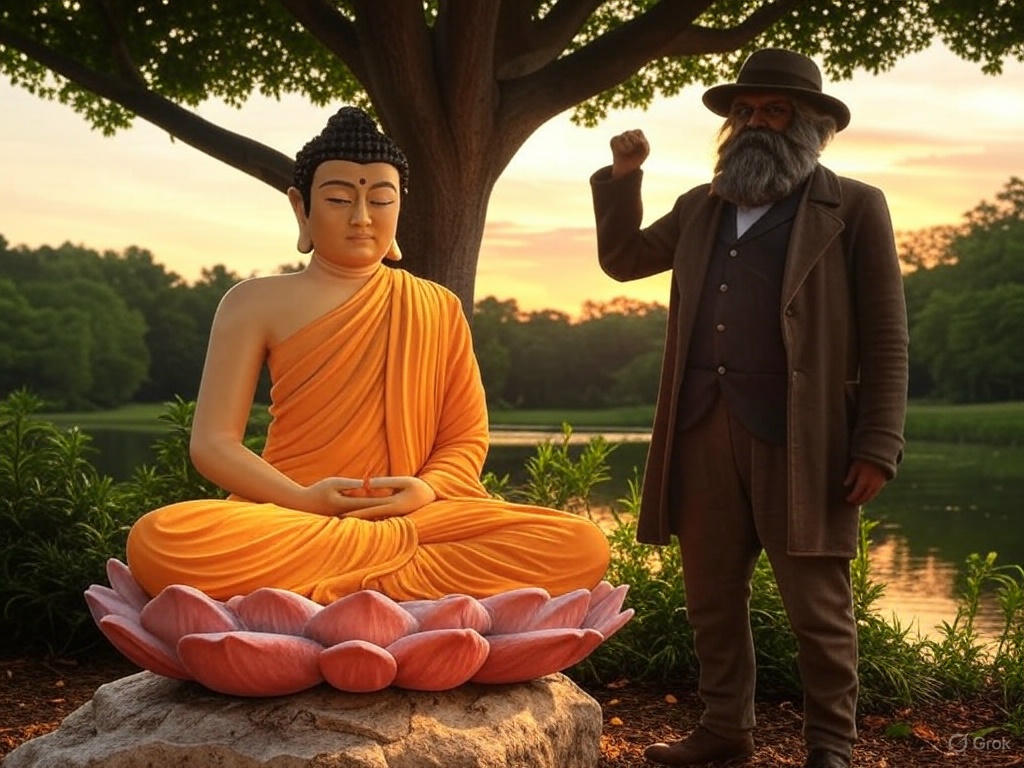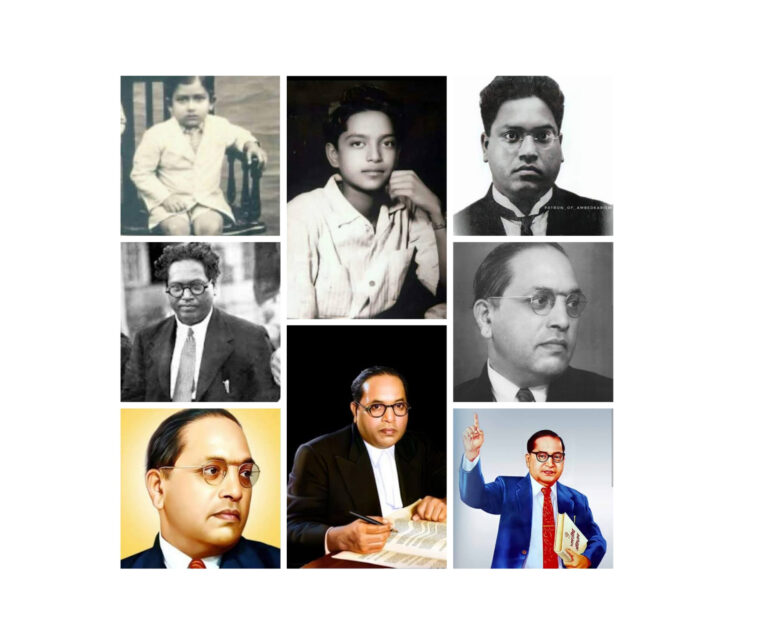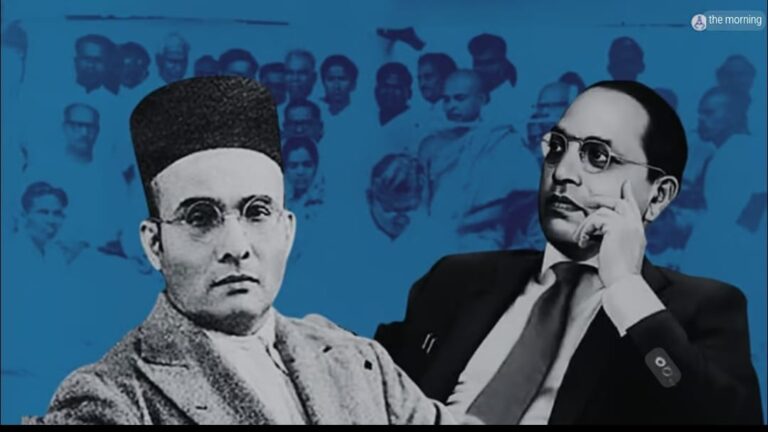What is Jai Bhim?
If you’ve ever heard the phrase “Jai Bhim” and wondered what it means, you’re not alone. It’s a powerful slogan that carries a lot of history, emotion, and significance, especially in India. In this article, we’ll explore what “Jai Bhim” means, where it comes from, and why it’s so important to millions of people. Whether you’re new to the term or just curious to learn more, this article will break it down in simple language.
What is Bhim?
Let’s start with the basics. “Jai Bhim” is a phrase that translates to “Victory to Bhim” in English. But who is Bhim, and why do people say “victory” to him? Well, Bhim refers to Dr. Bhimrao Ramji Ambedkar, one of the most influential figures in Indian history. He was a social reformer, economist, politician, and the chief architect of the Indian Constitution. Dr. Ambedkar dedicated his life to fighting for the rights of marginalized communities, who faced severe discrimination and oppression in Indian society.
When people say “Jai Bhim,” they’re not just saying a slogan—they’re expressing respect, gratitude, and solidarity with Dr. Ambedkar’s vision of equality, justice, and human rights. It’s a way of saying, “We stand with Ambedkar’s ideals, and we’re proud of his legacy.”
Who Was Dr. B.R. Ambedkar?
To truly understand the meaning of “Jai Bhim,” we need to know more about Dr. B.R. Ambedkar. Born on April 14, 1891, Ambedkar faced discrimination from a very young age because he was born into a Dalit family. At that time, Dalits were considered “untouchable” and were treated as outcasts in society. They were denied basic rights like education, access to public places, and even clean drinking water.
Despite these challenges, Ambedkar was a brilliant student. He earned multiple degrees, including a PhD from Columbia University in the United States and a law degree from the London School of Economics. His education and experiences abroad shaped his thinking and inspired him to fight for social justice in India.
Ambedkar’s work focused on ending caste-based discrimination and ensuring equality for all. He played a key role in drafting the Indian Constitution, which guarantees fundamental rights to every citizen, regardless of their caste, religion, or gender. He also advocated for education, economic empowerment, and political representation for Dalits and other marginalized groups.
Why Do People Say “Jai Bhim”?
Now that we know who Dr. Ambedkar was, let’s dive deeper into why “Jay Bhim” is such a powerful phrase. Here are a few reasons:
- A Symbol of Resistance: For centuries, Dalits and other oppressed communities faced unimaginable hardships. Saying “Jai Bhim” is a way of resisting that oppression and asserting their dignity and self-respect. It’s a reminder that they are not inferior and deserve equal rights.
- A Tribute to Ambedkar’s Legacy: Dr. Ambedkar’s work transformed the lives of millions of people. By saying “Jai Bhim,” people honor his contributions and keep his teachings alive. It’s a way of saying, “We remember you, and we’re grateful for what you did.”
- A Call for Equality: “Jai Bhim” is not just about the past, it’s also about the present and the future. It’s a call to continue fighting for equality, justice, and human rights. Even today, many people face discrimination because of their caste, and “Jai Bhim” serves as a rallying cry for change.
- A Sense of Community: For many Dalits and Ambedkarites (followers of Ambedkar’s ideology), saying “Jai Bhim” creates a sense of belonging and unity. It’s a way of connecting with others who share the same values and struggles.
The History Behind “Jai Bhim”
The phrase “Jai Bhim” has its roots in the Dalit Buddhist movement, which was led by Dr. Ambedkar. In 1956, Ambedkar converted to Buddhism along with hundreds of thousands of his followers. This was a significant event because Buddhism rejects the caste system and promotes equality and compassion. During this movement, “Jai Bhim” became a popular slogan to express solidarity and celebrate their new identity as Buddhists.
Over time, the phrase spread beyond the Buddhist community and became a symbol of empowerment for all marginalized groups. Today, you’ll hear “Jai Bhim” in protests, rallies, and social media posts. It’s a way of keeping Ambedkar’s vision alive and inspiring future generations to fight for justice.
Who said first, Jai Bhim
The slogan “Jai Bhim” was first enthusiastically chanted by Babu L.N. Hardas in the year 1935. He inspired the activists of the movement to greet each other with “Jai Bhim” and turned it into a symbol of a new way of thinking. Babu Hardas not only popularized the slogan “Jai Bhim” but also suggested that the response to it should be “Bal Bhim”, similar to how Muslims respond to “Salaam Alaikum” with “Wa Alaikum Salaam.” His unique idea was highly successful, and the slogan “Jai Bhim” fostered a sense of unity and pride within the Dalit community.
In 1938, during a meeting organized by Bhau Saheb More, an activist of the Ambedkar movement, in Makranpur, Kannad Taluka, Aurangabad district, Dr. Babasaheb Ambedkar was also present. On this occasion, Babu Hardas recited his slogan, and Bhau Saheb More supported it, turning it into another significant movement.
This marked the beginning of the widespread use of “Jai Bhim” as a unifying and empowering slogan among the Dalit community and followers of Dr. Ambedkar’s ideology.
How “Jai Bhim” Inspires Social Change
One of the most remarkable things about “Jai Bhim” is its ability to inspire social change. Here’s how:
- Empowering the Marginalized: For many Dalits and other oppressed communities, “Jai Bhim” is a source of strength and courage. It reminds them that they are not alone and that they have the power to challenge injustice.
- Promoting Education: Dr. Ambedkar believed that education was the key to liberation. Today, many organizations and activists use the slogan “Jai Bhim” to promote education and awareness among marginalized communities.
- Encouraging Political Participation: Ambedkar emphasized the importance of political representation for Dalits. By saying “Jai Bhim,” people are encouraged to participate in the democratic process and demand their rights.
- Fighting Discrimination: “Jai Bhim” is a powerful tool for raising awareness about caste-based discrimination and challenging stereotypes. It encourages people to question unfair practices and work towards a more inclusive society.
“Jai Bhim” in Popular Culture
In recent years, “Jai Bhim” has gained even more visibility through popular culture. Movies, songs, and books have helped spread Ambedkar’s message to a wider audience. For example, the 2021 Tamil film Jai Bhim (starring Suriya) brought the struggles of Dalits to the forefront and highlighted the importance of justice and equality. The film received widespread acclaim and sparked conversations about caste discrimination in India.
Social media has also played a big role in popularizing “Jai Bhim.” Hashtags like #JaiBhim and #Ambedkar are used to share stories, quotes, and ideas related to Ambedkar’s teachings. This has helped younger generations connect with his legacy and understand its relevance in today’s world.
Common Misconceptions About “Jai Bhim”
Despite its positive impact, “Jai Bhim” is sometimes misunderstood. Let’s clear up a few misconceptions:
- It’s Not Just a Slogan: Some people think “Jai Bhim” is just a catchy phrase, but it’s much more than that. It represents a movement for equality and justice.
- It’s Not Anti-Any Community: “Jai Bhim” is not about hating or opposing any particular group. It’s about uplifting marginalized communities and ensuring their rights.
- It’s Not Limited to Dalits: While “Jai Bhim” is closely associated with Dalits, its message of equality and justice is universal. People from all backgrounds can support and embrace its ideals.
How You Can Support the “Jai Bhim” Movement
If you’re inspired by the message of “Jai Bhim” and want to support the movement, here are a few things you can do:
- Educate Yourself: Learn more about Dr. Ambedkar’s life, work, and teachings. Read his books, ( voraciously like him) watch documentaries, or attend lectures.
- Speak Up Against Discrimination: If you witness caste-based discrimination or any form of injustice, don’t stay silent. Use your voice to stand up for what’s right.
- Support Marginalized Communities: Whether it’s through donations, volunteering, or simply spreading awareness, there are many ways to support marginalized communities.
- Promote Equality: Treat everyone with respect and dignity, regardless of their caste, religion, or background. promote thoughts of Ambedkar and Buddha, Small actions can make a big difference.
Conclusion: The Power of “Jai Bhim”
In a world where inequality and discrimination still exist, “Jai Bhim” serves as a beacon of hope and a reminder of the power of unity and resilience. It’s not just a slogan—it’s a movement, a philosophy, and a way of life for millions of people.
Dr. B.R. Ambedkar once said, “Educate, Agitate, Organize.” These words capture the essence of the “Jay Bhim” spirit. It’s about educating ourselves and others, agitating for change, and organizing to create a better future for everyone.
So, the next time you hear someone say “Jay Bhim,” you’ll know that it’s more than just two words. It’s a celebration of courage, a tribute to a great leader, and a call to action for a more just and equal world.
Jai Bhim!












